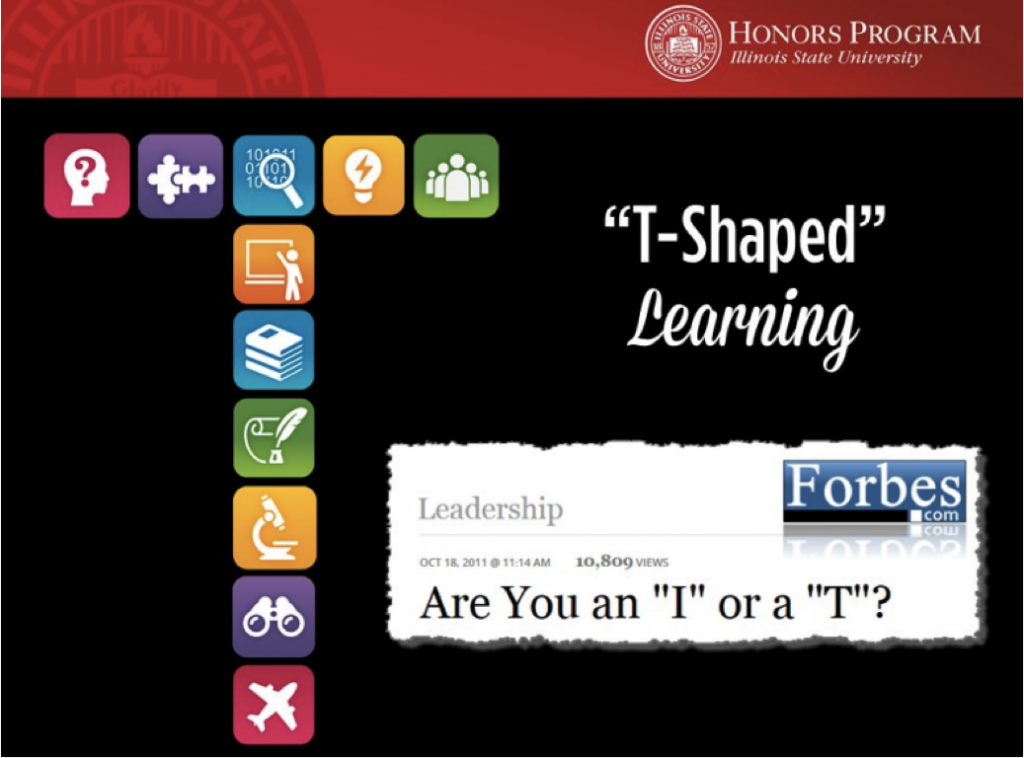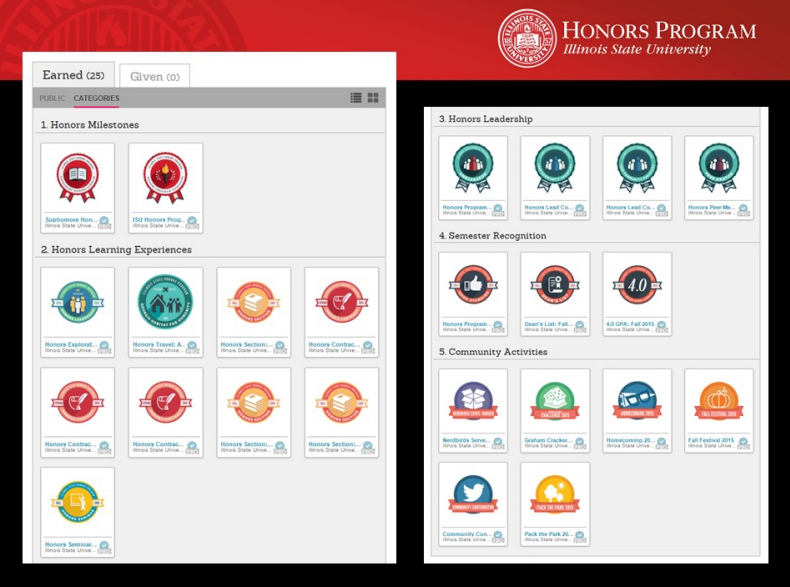When Amy Oberts joined the Honors Program staff at Illinois State University as the Associate Director, she discovered that the Program remained substantially similar to the one she remembered as an ISU honors student herself 17 years ago. Oberts saw an opportunity to update the Program to meet the needs and preferences of ISU’s digitally-enabled, constantly connected 21st century students. So, Oberts, in collaboration with Assistant Provost Dr. Rita Bailey, set out to recreate what it meant to be an Honors student at ISU.
As Honors Program staff worked to offer students compelling experiences to enrich their undergraduate educations, they did so with a particular emphasis on developing skillsets that would be marketable and attractive to future employers or graduate schools. The staff prioritized the establishment of a culture of reflection and curation. Dr. Bailey, envisioned an Honors Program that would, “…offer multiple pathways and ample opportunities for students to engage in meaningful curricular and co-curricular experiences—a Program supported by tools that would recognize students’ present successes and be showcased to achieve future aspirations.” But how?
Enter digital badges.
Dr. Bailey thought, “Incorporating an innovative application of digital badging within our Honors Program seemed the natural next step. This would add significant and visible value to students’ academic degrees. I wanted students to document their learning and make intentional choices within the Honors Program that could be verifiable and visible in students’ individualized electronic portfolios and would maximize the tangible value added by their participation the Program.”
Oberts further imagined each student’s journey in the Honors Program as a “visual collection” of experiences and achievements. "As the Program evolved, so did the visual representations,” Obert reflected. “We could talk about Honors experiences, such as seminars or research endeavors, and display them as icons. We could rearrange the icons and tell a unique story for each student according to the choices he or she made within the Honors Program. That was an important feature—to potential employers and incoming students alike. And it was exciting for our existing students, as they were able to customize their Honors experiences."

Working with Credly, Oberts first created an inventory of the kinds of opportunities and skillsets she hoped students would take from the Honors experience. The Honors Program team worked with this raw material, and what began as a loose collection of themes and opportunities quickly evolved into five distinct categories of broadly marketable skills acquired through six types of Honors learning experiences. Using a model of "5 over 6" allowed students to envision themselves as "T-shaped learners"— those with power skills applicable across many sectors supported by deep knowledge in one core area. Each student now selects their own set of experiences to pursue in light of his or her interests and goals.
Today, as students complete seminars or engage in opportunities such as service learning trips, they are given the option to claim related digital badges. Most badges require evidence which is reviewed by Honors Program staff according to preset criteria.
What originated as a redesign of the Honors Program grew to encompass a constellation of skillsets, experiences, and opportunities for students, fueled by the use of digital badges. Students are amassing badges and categorizing and curating them to best represent themselves online to potential employers, graduate schools and the world at large. Oberts explained, "Early in our seminars, we taught students how to manage their digital profiles on Credly, and some of them leveraged categories to support their portfolios and professional websites. They were able to carefully select what mattered most."

Having issued nearly 7,000 badges (and counting) in conjunction with the redeveloped Honors Program, the Program has seen a 131% increase in new enrollments since the fall of 2013. “[Digital Badges are] an engaging factor for incoming freshmen and their families, and they can see what our students have done with their badges. Our students have taken ownership of their educations and created compelling artifacts of their learning. What started as a journey to rebrand the program has grown into watching our students brand themselves!”
You can learn more about the Honors Program at ISU by visiting http://honors.illinoisstate.edu/opportunities/badging/
Amy Oberts will be presenting "Using Digital Badges to Connect Honors Students to Opportunities" along with Credly founder and CEO Jonathan Finkelstein, and Credly’s Instructional Designer for Digital Credential Systems Susan Manning at the 2016 IMS Global Learning Consortium on May 23-26 in San Antonio.
-1.webp?width=1024&height=758&name=58c9ce53df74c786192443%20(1)-1.webp)



.webp)

